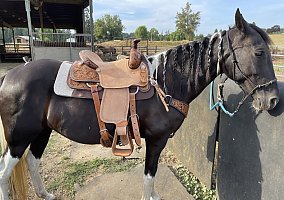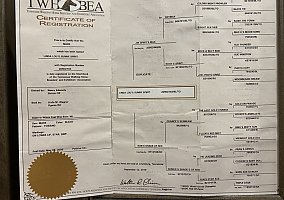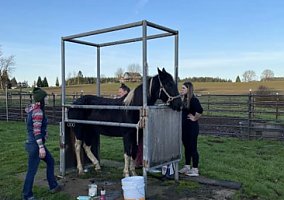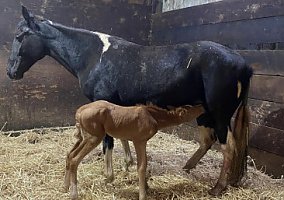TWH Sweet & Willing Mare
Name
Kimber
Breed
Tennessee Walking
Gender
Mare
Color
Black
Temperament
6 (1 - calm; 10 - spirited)
Registry
TWHBEA
Reg Number
20902703
Height
14.3 hh
Foal Date
May, 2009
Country
United States
Views/Searches
2,199/72,243
Ad Status
—
Price
$2,500
Tennessee Walking Mare for Sale in Albany, OR
We are looking to sell my daughters Registered TWH.
14 years old
14.3 hands
Stand for farrier all four feet
Crossties
Bathes
Good with tractors, leaf blowers, 4-wheelers, dogs etc.
Natural running walk
Has solid feet, no shoes required
Good in the pasture (whistle and she will come)
Good in the stall
Gets along with other horses and tends to fall in the middle or the end
Kimber is green broke, desensitized on the ground and has about 15 rides on her.
She will be ready for her home in 4 months due to just foaling a couple of months ago. She would also make a great broodmare as well. I know she carries a red gene due to her foal is red (the foal’s sire has a red gene as well).
She is very respectful with an experienced rider, but my daughter is just too passive for her. She definitely has slowed this mares mind down, but my daughter is a beginner and Kimber would be best suited for an intermediate rider. This mare is sweet and willing.
Cons to Kimber
She can be a bit herdy, but this goes away the more time you spend with her
Paws when she gets impatient
Can be anxious at times only when she is in the herdy phase
Located in Oregon
Asking $2,500.00
About Albany, OR
In the historic era, the area of the Willamette Valley that makes up modern-day Albany was inhabited by one of the tribes of the Kalapuya a Penutian-speaking, Native American people. The Kalapuya had named the area Takenah, a Kalapuyan word used to describe the deep pool at the confluence of the Calapooia and Willamette rivers. A variation of the place name can also be written as Tekenah. The Kalapuya population in the valley was between 4,000 and 20,000 before contact with Europeans, but they suffered high mortality from new infectious diseases introduced shortly afterward. The tribes were decimated by a smallpox epidemic that raged through the Pacific Northwest in 1782–83.




